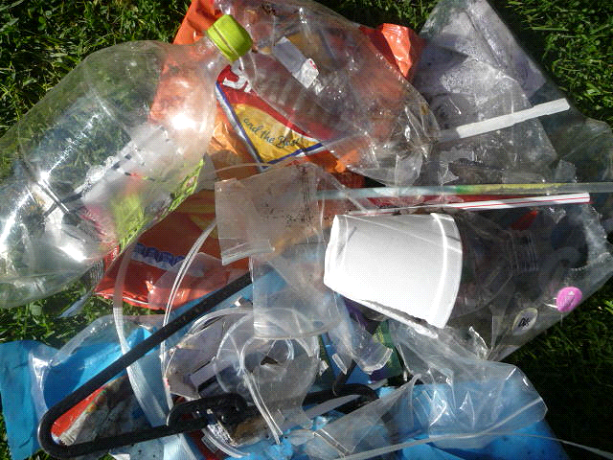Challenges and priorities for success on plastics in Australia
Posted on December 2, 2022 by DrRossH in Plastic RecyclingAttendees at a conference in Nov 22 Australia have boldly called for a set of improvements to prevent the loss of a vital industry in Australia and to ensure plastic pollution and recycling targets are reached.
The first conference in Australia for a circular low emissions future for plastics took place in Melbourne, and attendees were motivated to take the unusual step to prepare, discuss and release this Communique. The view was that Australia is at a fork in the road and will either attract billion-dollar global investment for a shift to become an efficient circular economy with plastics or will fritter away and lose vital manufacturing capacity and competitive advantage.
The Plastics and the Circular Economy Conference, 22-23 November was coordinated by the Australian-New Zealand chapter of Society of Plastics Engineers, with presenters and attendees including 150 senior decision makers from across Australia, New Zealand, Asia and Europe in governments, industry and environmental organisations, manufacturers, recyclers and brands.
The following are statements that reflect the general view and mood of conference attendees:
- Conference attendees endorsed the Australian Government’s Climate Change and National Waste Action Plant targets of zero carbon emissions by 2050 and 80% resource recovery by 2030 respectively. Attendees were deeply engaged in implications of global carbon and plastic pollution treaties and trade requirements for Australia.
- Attendees expressed concern at Australia’s ongoing rising emissions, rising plastic pollution, uneconomic recycling of plastics, increasing losses of recyclable materials to landfills, and potential collapse of Australia’s key plastics manufacturing supply chains and capability.
- There is growing frustration at lack of progress and a determination for big vision and concerted action to remove barriers that prevent improvements to the types and fates of plastics allowed and used in Australia.
- There was frustration at ‘spinning wheels’, namely that the rates for recycling and recycled content in products and packaging has been static for the last decade and that national 2025 and 2030 targets will fail to be met.
- Attendees called for a basket of measures to improve the productivity, efficiency and viability of reuse and recycling of plastic products and packaging in Australia. There was determination that the halt of businesses such as RED Cycle and Envorinex in Tasmania be a turning point, and that plastic recycling reaches rates comparable to competing plastics manufacturing nations like Korea and France.
- There was determination that actions must be taken to secure the continued operation of Australia’s plastics resin and manufacturing base in order that Australia have a hope to achieve recycling, circularity and lower emission targets by 2025 and 2030. It was stated several times that none of these targets will be achieved if improvements are not made to secure Australia’s sovereign manufacturing capacity for plastics. Australia’s vulnerability to supply chain disruptions during covid pandemic and impact of exorbitant gas prices upon Australia’s manufacturing, especially of plastic manufacturing and resin feedstock, were frequently cited.
- Australia has made some important investments in recycling infrastructure in recent years, mainly in PET packaging, and over $10B in investment is feasible and required if we are to hit the 80% waste reduction target by 2030. Key business CEOs expressed determination to invest at scale should the vision, policies and settings improve, and barriers be removed.
- Attendees urged governments, industry groups and major sectors and supply chains and businesses to collaborate to form policies, strategies and targets that will reset financial, legal, regulatory, certifications and performance standards for plastics products and packaging.
- These measures below were proposed by Conference attendees to enable transformation for financially viable improvements to eco-design, reuse, repair, recovery and recycling of plastics in Australia, with associated benefits of ~40-80% lower GHG emissions per tonne of plastics reused or recycled, reduced pollution, and losses of valuable plastic recyclables to landfills.
- Landfill levies upon valuable products and packaging need to double and be brought into line with competing manufacturing nations. Levies currently fail to provide the financial business case to divert good products and material from landfill, and to cover the cost of sorting, reprocessing and remanufacture. Such improvements would resolutely lift Australia’s productivity, and help it meet emissions and recycling and waste reduction targets.
- Currently, Australia’s voluntary approach to recycled content is weak by international standards. Currently, Australia only has voluntary targets for packaging, and no targets for recovery of other plastics products. Phasing in mandatory targets for recycled content in appropriate product and packaging will result in market pull and improved business case for better design, collection, sorting and recycling. This can also be achieved through tenders, specifications in priority sectors and industry targets and mandating industry performance certification and labelling programs (building upon success of WELs and E3 appliance programs).
- Improving the economics of recycling will result in many major multi-million-dollar investments in both mechanical and advanced chemical recycling, benefiting several sectors (packaging and food packaging especially, building, agriculture, transport, infrastructure, clothing and textiles etc) and many regions of Australia.
- Currently, Australia still has lax import regulations that permit the import of plastics product with harmful chemical additives, as in cheap tyres. Such regulations need to be updated in line with other developed nations and to improve environmental outcomes and recycling rates.
- Currently, Australia still has a lax voluntary approach allowing non-recyclable products and packaging into the Australian market. This current lack of national regulations results in high waste from households and businesses, and limits the performance and viability of Australian collectors, sorters, manufacturers and recyclers. It also hinders the adoption of high-performance certifications and labelling schemes.
- Australia has a growing plethora of niche voluntary stewardship initiatives that are causing confusion and high cost for some sectors such as agriculture and exhausting well-intentioned people trying to create and manage them and recruit members. Attendees urged for coordination for unity, efficiency and success. It was also noted that almost all stewardships are functioning as subsidised collection schemes and not improving design, repair or recyclability.
- It was agreed that most stewardship schemes in Australia are narrow in scope and voluntary membership and that most successful schemes overseas are mandatory. This adds further complexity and burden to Australia’s capability to meet targets.
In conclusion, the adoption of these financial measures and regulations for quality, higher performance, reuse, repair and recyclability will minimise greenwashing and lift Australia’s productivity, reducing emissions and waste. These measures will also support Australia’s manufacturers to comply with increasingly stringent import requirements in Europe and Asia for these same requirements of low embodied emissions, repairability in design, recyclability and recycled content.
Attendees were enthused and energised for these improvements to be introduced, welcomed the contribution and collaborative strength of governments and industry to unlock Australia’s extraordinary potential and investment and determined for Australia to become not only a global renewable energy superpower but also a circular plastics nation.
Prepared on behalf of Conference attendees, shared, edited and approved in principle during the concluding plenary session of the Conference, Wednesday 23 November 2022
Helen Millicer, GAICD, Churchill Fellow
Guest Conference Curator, SPE ANZ Conference
helen@helenmillicer.com

 How many people today grab a takeaway coffee cup from the local cafe to drink on the go? We don’t know, but the number must be enormous.. Most every one of the above have a plastic top that will last 100s of years. Some cafes still use plastic cups that last a similar time. Is 10 minutes of coffee worth 100s of years of trash?
These items can be seen littering our gutters and on our streets all over the place. If they were all cardboard, they would still be littered, but they would, at least, be gone in a short time.
They do not need to be made of plastic.
How many people today grab a takeaway coffee cup from the local cafe to drink on the go? We don’t know, but the number must be enormous.. Most every one of the above have a plastic top that will last 100s of years. Some cafes still use plastic cups that last a similar time. Is 10 minutes of coffee worth 100s of years of trash?
These items can be seen littering our gutters and on our streets all over the place. If they were all cardboard, they would still be littered, but they would, at least, be gone in a short time.
They do not need to be made of plastic.
 On the way home from the gym last week, a distance of about 1 km (1/2 mile), I counted the items of plastic litter on the curb as I walked. In that short distance I counted 63 pieces of plastic litter. Plastic drink bottles, bottle tops, candy wrappers, plastic film, polystyrene fragments etc. That seemed to be a lot to me. I guess it is a generational thing. Our parents would have been horrified to see that amount, whereas it seems to go unnoticed by our youth of today. In another 20 years how many pieces will there be on this stretch, -- 200? What will today’s youth think of that new amount then when they are older? Will their children be so readily accepting of a higher amount of litter?
On the way home from the gym last week, a distance of about 1 km (1/2 mile), I counted the items of plastic litter on the curb as I walked. In that short distance I counted 63 pieces of plastic litter. Plastic drink bottles, bottle tops, candy wrappers, plastic film, polystyrene fragments etc. That seemed to be a lot to me. I guess it is a generational thing. Our parents would have been horrified to see that amount, whereas it seems to go unnoticed by our youth of today. In another 20 years how many pieces will there be on this stretch, -- 200? What will today’s youth think of that new amount then when they are older? Will their children be so readily accepting of a higher amount of litter?
Discussion · No Comments
There are no responses to "Challenges and priorities for success on plastics in Australia". Comments are closed for this post.Oops! Sorry, comments are closed at this time. Please try again later.